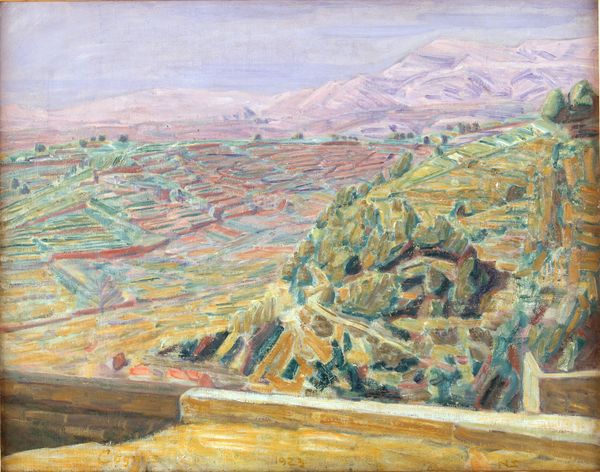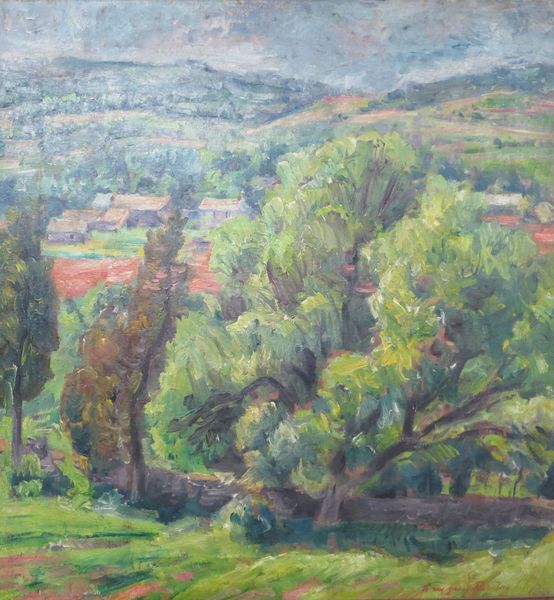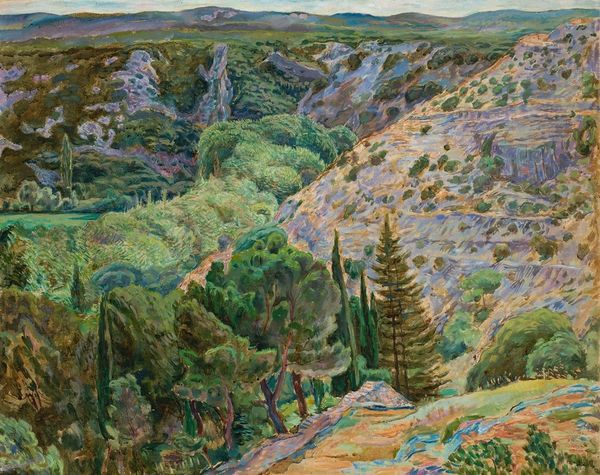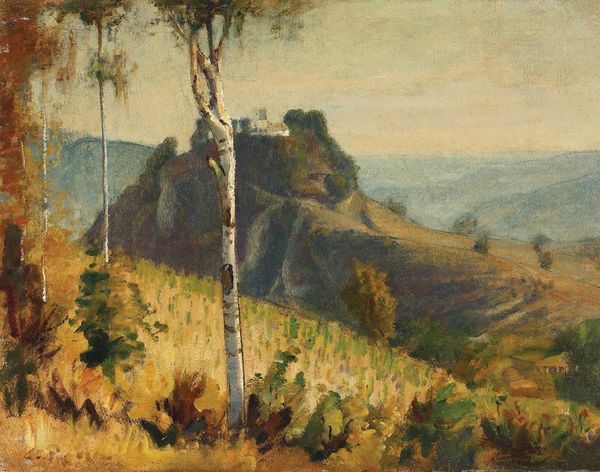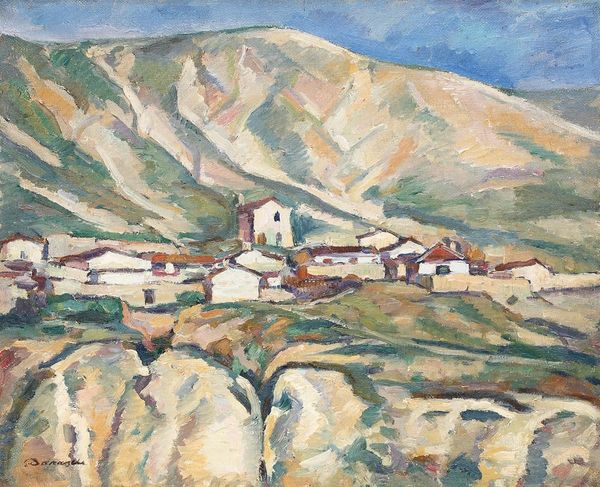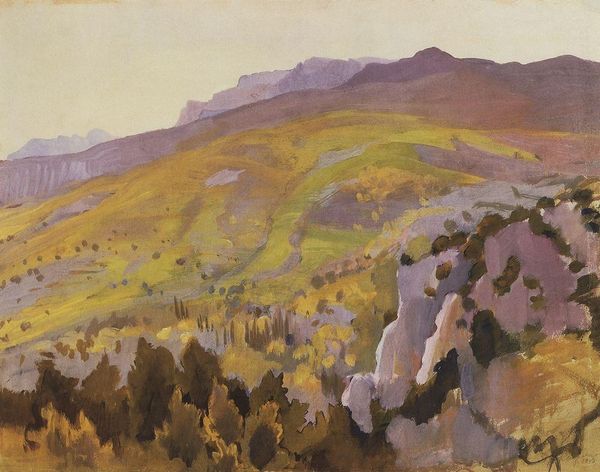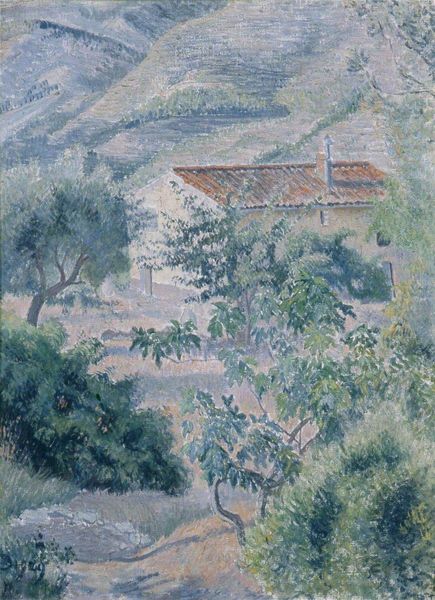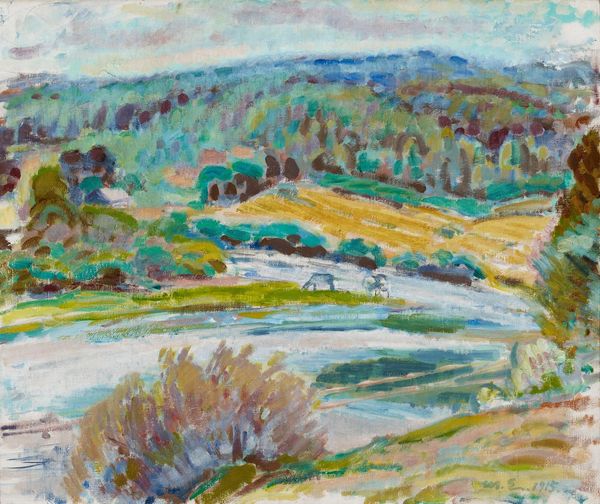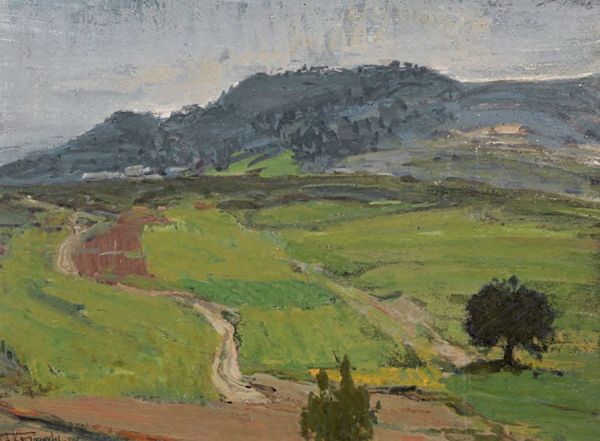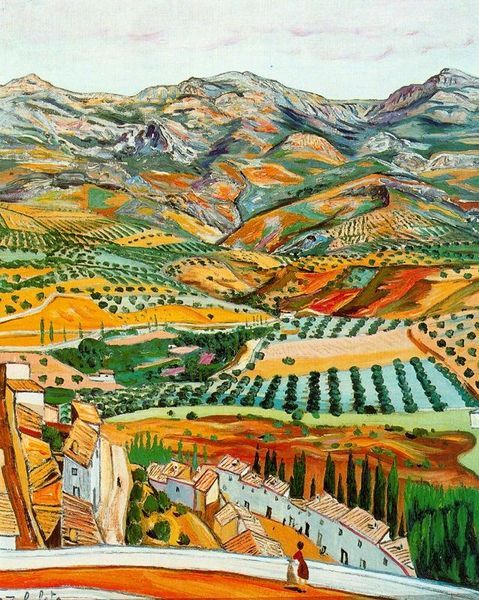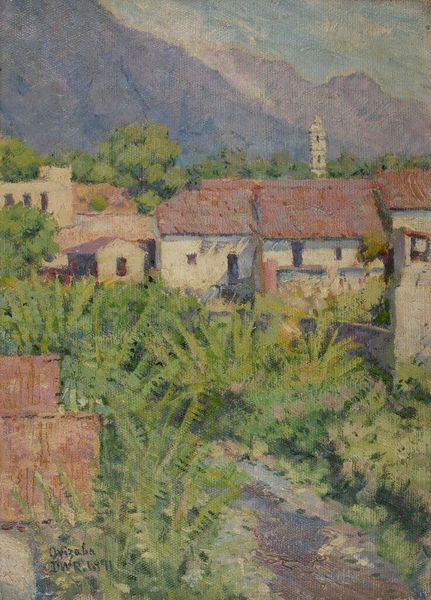
Copyright: Public domain
Editor: We're looking at Lucien Pissarro’s "Le Ragas, near Toulon" from 1930, an oil painting of a landscape in France. It feels incredibly peaceful, a soft haze over the hills. How do you interpret this work, considering Pissarro’s post-impressionist style? Curator: The hazy quality you mention evokes a sense of timelessness. The repeated patterns of the hills suggest an almost rhythmic continuity. Note how Pissarro uses those terraced slopes, almost like gentle waves, and consider how they might act as symbols of cultivation and the passage of generations working the land. Does this cultural activity alter the landscape in any meaningful ways for you? Editor: I see what you mean about the "waves," but I had not thought of cultivation – that makes sense. Does the muted color palette also tie into the idea of generational continuity? Curator: Precisely. The subdued tones suggest a harmony with nature, a cyclical return. Think about the colors of soil and stone dominating the scene, acting as silent witnesses across the years. In what ways do you think Pissarro uses those compositional devices to convey an intimate, enduring relationship between humans and their surroundings? Editor: It gives the landscape a feeling of being lived-in and cared-for, which is maybe a different take on landscape art. I learned a lot looking at the symbols this time! Curator: Indeed. The enduring power of the land and those who work it—that's what resonates most deeply for me, and perhaps for others, too.
Comments
No comments
Be the first to comment and join the conversation on the ultimate creative platform.

